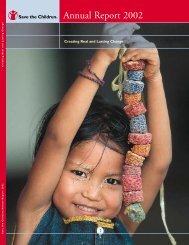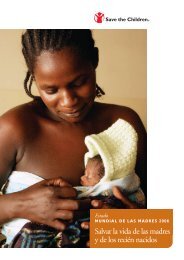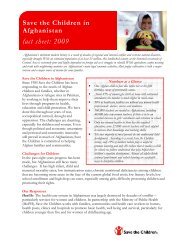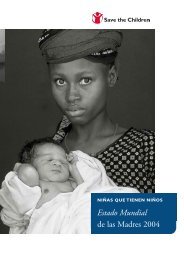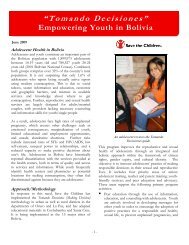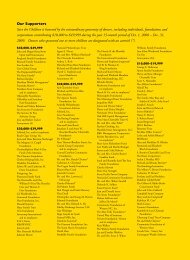Adolescent Sexual and Reproductive Health Toolkit for - UNFPA
Adolescent Sexual and Reproductive Health Toolkit for - UNFPA
Adolescent Sexual and Reproductive Health Toolkit for - UNFPA
You also want an ePaper? Increase the reach of your titles
YUMPU automatically turns print PDFs into web optimized ePapers that Google loves.
Assessment<br />
Tools<br />
Assessing <strong>Adolescent</strong> <strong>Sexual</strong> <strong>and</strong><br />
<strong>Reproductive</strong> <strong>Health</strong><br />
In a humanitarian crisis, it is important to underst<strong>and</strong><br />
the SRH situation of both male <strong>and</strong> female adolescents to develop a<br />
plan that responds to their specific needs. In<strong>for</strong>mation about SRH<br />
needs is gathered through assessments conducted during the<br />
course of an emergency situation.<br />
An initial rapid assessment (IRA) is conducted during the first 72 hours of an acute<br />
emergency <strong>and</strong> is used to collect demographic in<strong>for</strong>mation <strong>and</strong> identify life-saving<br />
issues that must be addressed urgently to ensure the well-being of the beneficiary<br />
population. It is important to remember that the MISP is a life-saving set of interventions<br />
that are implemented without prior assessment. The initiation of the MISP<br />
should never be delayed while waiting <strong>for</strong> results of any assessment, including the IRA.<br />
After an emergency situation has stabilized, a situational analysis will provide in<strong>for</strong>mation<br />
about the baseline status of RH needs <strong>and</strong> services, <strong>and</strong> will help the agency prioritize<br />
interventions when comprehensive RH services are introduced. Situational analyses<br />
may use several methods of data collection, including secondary data, in-depth interviews,<br />
focus-group discussions (sex-separated, if culturally required), community<br />
mapping, <strong>and</strong> facility assessments.<br />
Comprehensive RH assessments are not often conducted in emergency situations<br />
because they are time-consuming <strong>and</strong> they can place additional burdens on precious<br />
human <strong>and</strong> logistic resources. After stabilization of an acute emergency, however, a<br />
comprehensive RH assessment of RH knowledge, beliefs <strong>and</strong> behaviors, can provide<br />
valuable in<strong>for</strong>mation that will help an agency design an SRH program that responds<br />
to the specific gendered needs of the beneficiary population.<br />
52<br />
<strong>Adolescent</strong> <strong>Sexual</strong> <strong>and</strong> <strong>Reproductive</strong> <strong>Health</strong> <strong>Toolkit</strong> <strong>for</strong> Humanitarian Settings




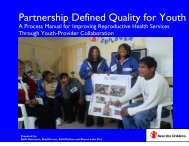

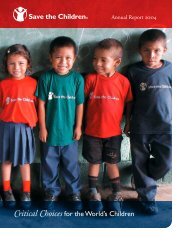
![View full document [PDF 3.39 MB] - PreventionWeb](https://img.yumpu.com/27308954/1/190x245/view-full-document-pdf-339-mb-preventionweb.jpg?quality=85)
